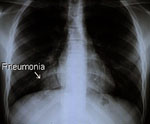Tip sheets highlight timely news and events at Washington University in St. Louis. For more information on any of the stories below or for assistance in arranging interviews, please see the contact information listed with each story.
Up out of bed
Mobilizing pneumonia patients helps them go home earlier

Many medical advances involve complicated new technologies or procedures. But Linda Mundy, M.D., associate professor of medicine and an infectious diseases specialist at Washington University School of Medicine in St. Louis, recently reported good results with a new pneumonia treatment that can be summed up in a single sentence: Get patients up out of bed earlier and more often, and they check out of the hospital an average of one day sooner. Mundy says the high volume of U.S. pneumonia hospitalizations could make the new treatment a potent cost-saver, but added that a second study of the approach, known as early mobilization, is needed to confirm the beneficial effects.
Mind and body
Washington University researchers to launch center focused on mind/body connections

Despite being the largest vital organ in the body, the liver has very few identifiable landmarks to help guide a cancer surgeon around its surface. Two-dimensional ultrasound images currently are the standard navigational tool, making it difficult to discern depth and location in the liver during surgery to remove tumors. That’s why a research team led by William C. Chapman, M.D., professor of surgery and chief of the Abdominal Transplantation Section at Washington University School of Medicine in St. Louis plans to launch trials examining the use of three-dimensional imaging techniques to complement ultrasound during liver surgery. The research team will investigate standard three-dimensional imaging techniques like MRI, CT scanning and PET for guiding surgeons during tumor removal surgery.
Digitizing daydreams
Brain’s ‘resting’ network offers powerful new method for early Alzheimer’s diagnosis

Researchers tracking the ebb and flow of cognitive function in the human brain have discovered surprising differences in the ability of younger and older adults to shut down a brain network normally active during periods of passive daydreaming. The differences, which are especially pronounced in people with dementia, may provide a clear and powerful new method for diagnosing individuals in the very early stages of Alzheimer’s disease.